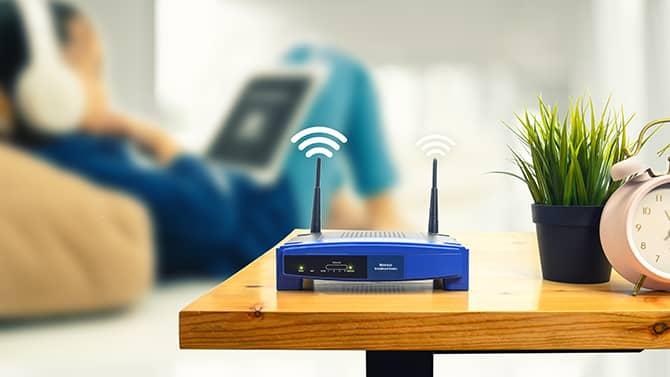Your router. It just sits there—small, humming, flashing. Seems harmless, right? But this quiet device is the single digital entry point into your home. Think of it like a doorman you hired and promptly forgot. And yet, through it, your smart fridge, your kids’ tablets, even the baby monitor whisper across the web. If that gate swings open to the wrong hands? You’re not just sharing a Wi-Fi password—you’re handing over your life.
According to a 2024 report by Cybersecurity Ventures, over 35% of home routers in use today are vulnerable to at least one known exploit. That’s more than one in three.
Let’s talk about locking things down. Without sounding like a robot.
1. Change the Default Login Credentials (Immediately. No, Seriously.)
If your router still answers to admin/admin or admin/password, you’ve basically left a key under your digital doormat. The first and most important step in securing a Wi-Fi router is changing both the username and password used to access the router settings.
Hackers routinely scan IP ranges looking for default credential routers. Think of it like rattling doorknobs in a hotel hallway.
Make the password long. Make it ugly. Add symbols, numbers, maybe even a Shakespearean insult. Just don’t leave it factory-fresh.
2. Setup Router VPN
Instead of installing a VPN on each device individually, configure VPN for the router—this way, every device connected to your Wi-Fi is automatically protected, even ones that don’t support VPN apps (like smart TVs, game consoles, or IoT devices). It’s a one-time setup that offers full-home encryption, hides your IP address, and helps bypass regional restrictions across the board. If necessary, use VeePN router setup guide with step-by-step instructions. But you need to make sure that the provider supports this format of VPN apps and your router supports VPN protocols (like OpenVPN or WireGuard). You can try VeePN VPN, it has such an add-on available for most routers.
Rename Your Network (and Avoid Giving Too Much Away)
You’d be surprised how many people name their network after themselves: JohnsonFamilyWiFi, TheSmithsHome, Apartment 3B. It’s charming. It’s personal. It’s also bait.
Rename your SSID to something unrecognizable. Avoid using addresses, names, or anything that would link the network to you directly. A harmless-sounding banana-toast-6GHz is far safer than 402MainSt_Unit1.
3. Keep Firmware Updated (Your Router Needs Patching Too)
Routers don’t update themselves. Well, not always. And old firmware is a playground for attackers.
Visit the manufacturer’s website or login to your router’s admin panel. Check for updates. Set reminders if you must. Firmware updates often patch vulnerabilities—ones that hackers exploit en masse.
Fun fact: In 2023, a vulnerability in over 90 models of home routers allowed attackers to remotely hijack settings. The fix? A simple firmware patch.
4. Use WPA3 Encryption If Available (Or At Least WPA2)
Let’s cut through the jargon. WPA3 = better security. WPA2 = still acceptable. WEP = obsolete, broken, toss-it-in-the-bin level insecure.
If your router is newer than 2020, it probably supports WPA3. Enable it. If not, ensure at least WPA2 is active. This encryption helps protect data in transit—so your Wi-Fi signals aren’t just flapping in the wind for anyone to grab.
5. Disable Remote Management (Unless You Really Need It)
Remote management sounds helpful—being able to tweak your router settings while you’re sipping a latte across town. But in most cases, it’s a gaping hole.
Unless you have a very specific reason, disable remote access to your router’s admin panel.
Hackers actively scan for routers with this enabled. Don’t make their job easier.
6. Use a Guest Network (Separate Your World)
Do your guests need full access to your home network? Absolutely not.
Set up a guest Wi-Fi network. One that’s separated from your main devices. Many routers allow you to do this with just a toggle. Use a separate password. Keep it simple. Keep it isolated.
That way, your friend’s sketchy old tablet can’t start chatting with your work laptop. Of course, this won’t replace having VeePN VPN and other security measures, but it’s still a useful setting. And if they do end up compromised, your devices stay safe.
7. Turn Off WPS (Convenient but Risky)
Wi-Fi Protected Setup (WPS) is that button you press to connect a device without a password. Fast? Sure. Safe? Not even close.
WPS is infamous for being exploited by brute-force attacks. Disable it. Seriously. No matter how convenient it seems, a minute saved connecting is not worth months of dealing with identity theft or worse.
8. Watch for Rogue Devices (Know What’s on Your Network)
Every few weeks, check what’s connected to your router. Most router admin panels offer a device list. Take five minutes to scroll through it.
See something unfamiliar? A device labeled “Unknown”? Investigate. Kick it off. Change your password.
According to a 2022 Cisco survey, 45% of users had at least one unauthorized device connected to their home network—without realizing it.
Knowledge is power. Especially when it comes to invisible guests using your bandwidth.
Final Thoughts: Paranoia or Prudence?
Is all this overkill? Maybe. But remember—cybercrime doesn’t knock politely. It doesn’t wear a mask or speak in riddles. It just silently slips into your network, sometimes unnoticed for months.
These router security tips aren’t about living in fear. They’re about ownership. Taking charge of the one device that silently governs everything from your streaming habits to your smart lights.
Set a reminder. Audit your router once a month. It’s 10 minutes well spent.
After all, you wouldn’t leave your front door wide open just because “no one ever comes in.”





Leave a Reply